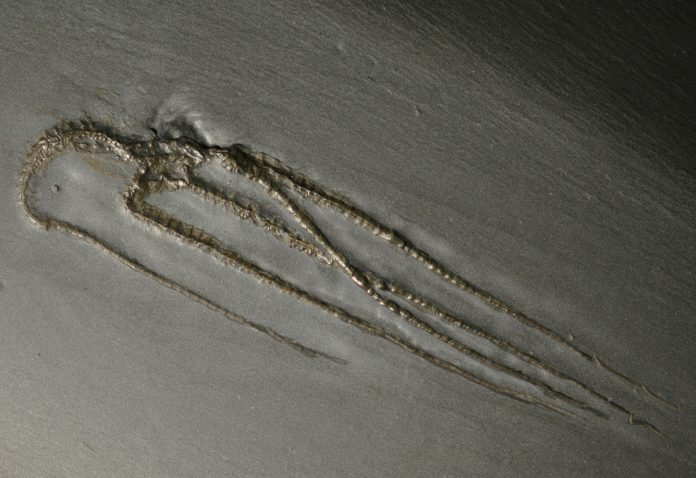
Scientists discovered mysterious, soft remains dating back 541 million years ago in the Qingjiang fossil site at China’s Hubei province
The Cambrian period spans an incomprehensible timeframe of 55.6 million years. To pinpoint these fossils’ temporal origins we look at the moment of the ‘Cambrian Explosion’.
The fossils are known as the Qingjiang biota, which is said to rival other recently discovered Chinese biotas for sheer diversity of species.
This moment began the diversifying of life on earth: before it, the land was relatively barren with little more than microbial soil crust and some curious sea-molluscs which came from the oceans. There was a severe lack of vegetation on the land, whilst the ocean was the most diverse region of life.
With the ‘Cambrian Explosion’ event, single-celled organisms began to evolve all at once.
This created every single genetic class of animal we have on Earth today, in a relatively short space of time. The Cambrian Explosion would lead to the birth of the first dinosaurs, roughly 298 million years later.
The Qingjiang site’s fossils are particularly striking because they are the bodies of creatures which are rarely capable of being preserved: soft body tissues of jellyfish and sea anemone, their skin, eyes and internal organs also intact.
Their muscles, guts, eyes and mouths are miraculously still visible, giving scientists an unparalleled perspective on how the animal ecosystem functioned during this prehistoric time.
This discovery rivals the Burgess Shale, a fossil deposit found in the Canadian Rockies of British Colombia and dated as 508 million years old, also within the Cambrian period. This was discovered in 1901, bearing one of the world’s only soft-part fossilisations and famous for the “exceptional” preservation.
Professor Allison Daley, a palaeontologist who did not work on the study but wrote an analysis, spoke to BBC’s Science In Action Programme:
“It blew my mind – as a palaeontologist, I never thought I’d get to witness the discovery of such an incredible site.
“For the first time we’re seeing preservation of jellyfish – [when] you think of jellyfish today, they’re so soft-bodied, so delicate, but they’re preserved unbelievably well at this site.”
Meanwhile, the Qingjiang fossils were found in 2019 within rocks on the bank of the Danshui River after they were luckily clothed in a cocoon of mud, after an underwater mudslide shifted the ocean floor.
The 4,351 fossils uncovered so far represent 101 different species – 53 of them new to scientists entirely.
All we know about this time period is drawn from the fossils we have discovered: what could the Qingjiang fossils reveal about the origins of life on Earth?
Professor Robert Gaines, who worked on the Qingjiang study, said to the BBC:
“Biotic diversity today is something that we take for granted, even though there are indications that extinction rates are sharply increasing.
“Yet most of the major animal lineages were established in a singular event in the history of life, the Cambrian explosion, the likes of which have never been seen before or after. It also reminds us of our deep kinship to all living animals.”
Read the original findings here.










